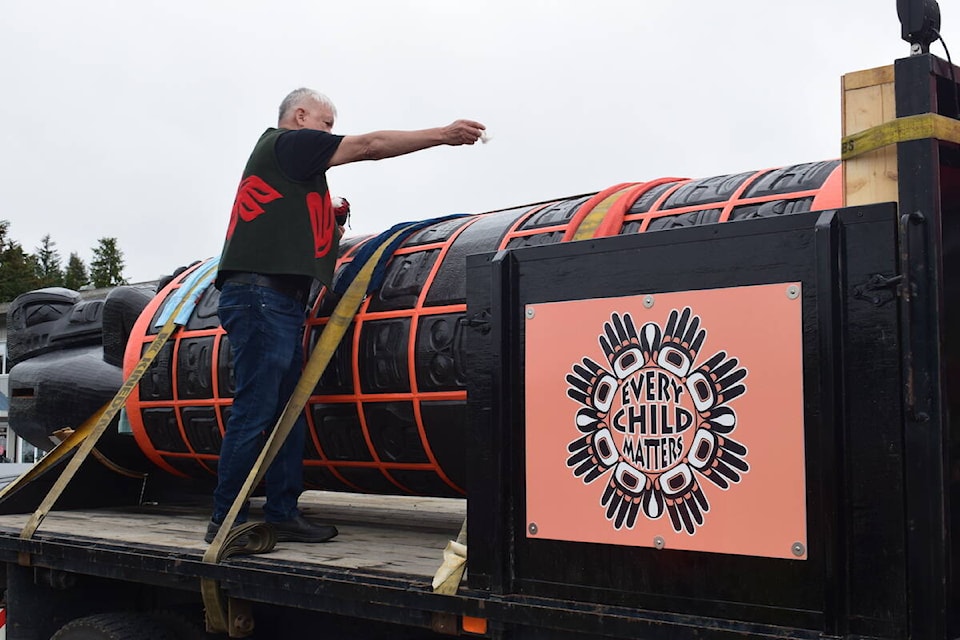Kwakiutl First Nation master carver Stan Hunt’s monument for residential school children completes its Island tour today bound for Vancouver.
Hunt, apprentice carver Rey Dickie and master carver Mervyn Child, worked on the project together for roughly 11 months, finishing just in time for its unveiling on June 16 at Carrot Park in Port Hardy.
Vancouver businessman and philanthropist Ray Bergen was the financial backer for the monument, which stands 18 feet tall by four feet in diameter and features a giant raven on top with the seed of life in its beak, and has traditionally carved children’s faces all the way to the bottom. The monument only has two stark colours, black and orange. The black was used to represent all the children who died during this horrific part of Canadian/Indigenous history, and the orange bands that separate the rows of children’s faces are there to honour the Every Child Matters movement.
There’s a cross in the centre of the monument that’s been inverted. The cross represents those who were involved with the residential schools, says Hunt.
A Canadian maple leaf was also painted upside down, along with the words RCMP and NWMP (North West Mountain Police).
Hunt had originally decided to create the monument after learning of the first 215 unmarked graves that were recovered at the former residential school at Tk’emlups te Secwepemc in 2021.
The unveiling of the monument in Carrot Park featured Indigenous dancers, drummers, singing, and quite a few heartfelt speeches from local community members.
Hunt spoke briefly at the end of the ceremony, addressing the crowd of hundreds who’d gathered to pay their respects and see the monument before it made its way down island to Campbell River.
“I wanted [this monument] to be a focal point that people could look at, with the rest of Canada and people all around the world, to see this and to know exactly what this was for,” Hunt said. “This was made for the children who were in residential schools, not only in Canada, but around the world - this isn’t just Canada, this happened all around the world and it’s something that should never have happened in any time of our history, and that monument should’ve never had to have been made.”
Hunt then wondered what all the children who had died in residential schools would have done with their lives if they’d survived.
“They might have become teachers, they might have been lawyers, doctors, business people … they never had a chance to do any of that, so it leaves it up to us to wonder what they could have been.”
He thanked Bergen and his wife, stating he wouldn’t have been able to create the project without their backing, and then thanked his family and friends who stood alongside him the entire way.
He added he was, “really proud to see so many people that came out today” for the ceremony.
Vancouver Island tour schedule for the monument
June 16: Port Hardy.
June 18: Campbell River
June 19: Nanaimo and Duncan
June 20: Victoria Inner Harbour.
June 21: Island farewell, arrival to Vancouver Inner Harbour
editor@northislandgazette.com
Like us on and follow us on



